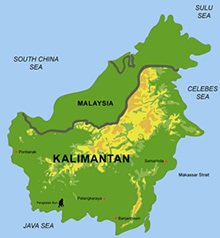lidar technologies

Lidar technologies
We measure distances by illuminating a target with a laser and analyze the reflected light.
- Biomass Situation of Mawas Region in Central ...
- Spatial and temporal variation of above ground ...
- Multi-Temporal Airborne LiDAR-Survey and Field ...
- Relating ground field measurements in Indonesian ...
- Assessing Carbon Changes in Peat Swamp Forest ...
- Multi-Temporal Airborne LiDAR-Survey in 2007 and ...
- Characterizing Peat Swamp Forest Environments ...
- Multi-temporal Helicopter LIDAR- and RGB-Survey ...
- Application of LiDAR data for analyzing fires, ...
- LiDAR Technology for peatland using DSM- and ...
- Small-footprint airborne LiDAR technology for ...
- 2006 Fire depth and tree height analysis in Block ...
- Relating tree height variations to peat dome ...
- LiDAR- / Airborne Laser Scanning mapping of ...
- Rungan Sari PCB, Draft Masterplan with LiDAR-DTM ...
- LiDAR Survey of Small Scale Gold Mining near ...
- Airborne Laser Scanning measurements in Central ...
- Peatland Topography of Ex-MRP measured with ...
- Rungan Sari Airborne Laser Scanning 3D-Model and ...
- Peat Dome Measurements in Tropical Peatlands of ...
- Erfolgreiches Pilotprojekt im tropischen ...
- Airborne Laser Scanning monitoring of Ex-MRP area ...
- Successful Helicopter Flight Trials with Airborne ...
- Successful Helicopter Flight Trials with Airborne ...
gallery

image gallery
Find a large collection of images from many years of exploration by kalteng-consultants.
History Borneo - Kalimantan · Excursions to peatland 1996 · Mega Rice Project 1999 · 2004 · 2005 · 2006 · 2007 · 2008 · 2009 · 2010 · 2011 · 2012 · 2013 · 2014 · 2015 · 2016-March · 2016-August ·
lidar-technology
Peat Dome Measurements in Tropical Peatlands of Central Kalimantan with a high-resolution Airborne Laser Scanner to achieve Digital Elevation Models; IPS-Tullamore, 6-2008

Figure: ALS-Tracks from 8.8.2007 showing the topography (LAS-DTM-format, classified) of peatland and
peat-drillings between rivers Katingan left and Rungan right superimposed on a Landsat-image 2000.
The LiDAR-tracks show in blue colour low and in red high elevation area.
Boehm-Tropical+peatlands+measurement+ALS+29.02.2008.pdf
13th International Peat Congress 8 to 13 June 2008, Tullamore, Ireland
H.-D. Viktor Boehm and Juergen Frank
Kalteng Consultants, Kirchstockacher Weg 2
D-85635 Hoehenkirchen near Munich, Germany + Palangkaraya, Indonesia
Phone: +49 8102 774848, e-mail: viktorboehem@t-online.de - www.kalteng.org
With a high-resolution Airborne Laser Scanner (ALS) the topography of peatlands was measured in August 2007 by a helicopter. With this modern technology we achieve a 3-dimensional Digital Elevation Model (DEM), hydrological data, and bio mass data and combined with peat drillings the amount of carbon storage. The ALS-resolution is in elevation (z) +/-15cm and in x- and y-direction 0.5m. Compared to SRTM-images with 90m x 90m x 5m and Landsat-Satellite-images with 30m x 30m (without elevation) we got much better knowledge of peatlands.
DEMs are divided into two types of groups. The Digital Surface Model (DSM) gathers information by Laser Scanner with trees, bridges and house and the Digital Terrain Model (DTM) is filtered using the DSM and shows the topography of landscape without trees, bridges, houses etc. The infra-red Laser sends 100,000 pulses per second and receives many of them in the detector and determines the distance to the different objects.
The study area was the Ex-Mega Rice Project (MRP) Blocks A, B, C, E and the Sebangau National Park between the rivers Sebangau, Rungan and Katingan. Results will be presented only for the area between the rivers Rungan and Katingan at the upper part of Sebangau National Park.
To understand better the situation of that area peat drillings have been done in 4-2006 parallel to the Kalimantan highway along the transect Tangkiling and Kasongan and in 7-2007 from Katingan river to transmigration village Habaring Hurung south of Tangkiling. Results of these peat thickness measurements showed a peat depth up to 8.10 m res. 10.0m. The peat surface with peat dome was measured along the two transects using the ALS technology with 49.1m res. 40.8m. The airborne Laser penetrates the Peat Swamp Forest (PSF) and reaches the peat surface. We measured an average tree height of 35m
The stored peat volume and carbon for the northern Sebangau Catchment and Palangkaraya between Katingan and Rungan rivers up to the border of the heath forest has 7.1 Gm³ (res. 5.93 Gm³) peat volume. The content of carbon in 1 cubic meter of peat has been measured and is 154.3kg res. 131kg. We found by ALS-measurements and Peat drillings and interpolation a stored Carbon value of 0.92 to 1.1 Gtons for this area.
Keywords: Peatland, Peat Dome, GIS, Airborne Laser Scanning, Peat Drilling, Digital Elevation Model, Carbon Storage, Central Kalimantan
read more

